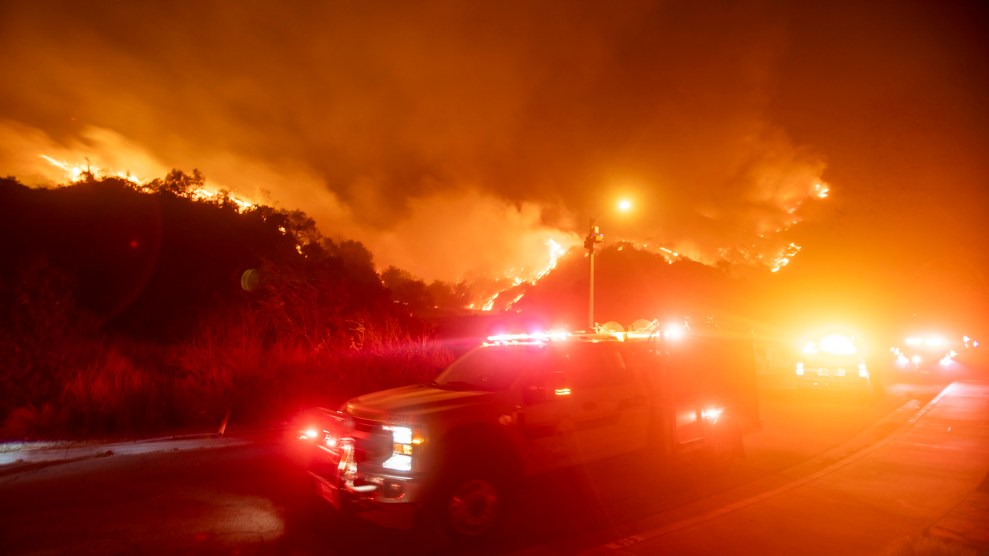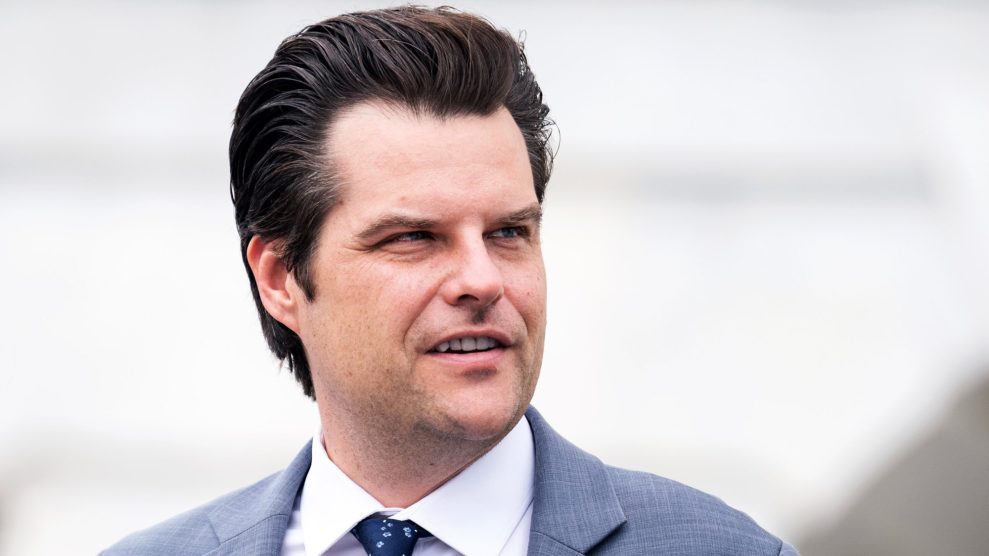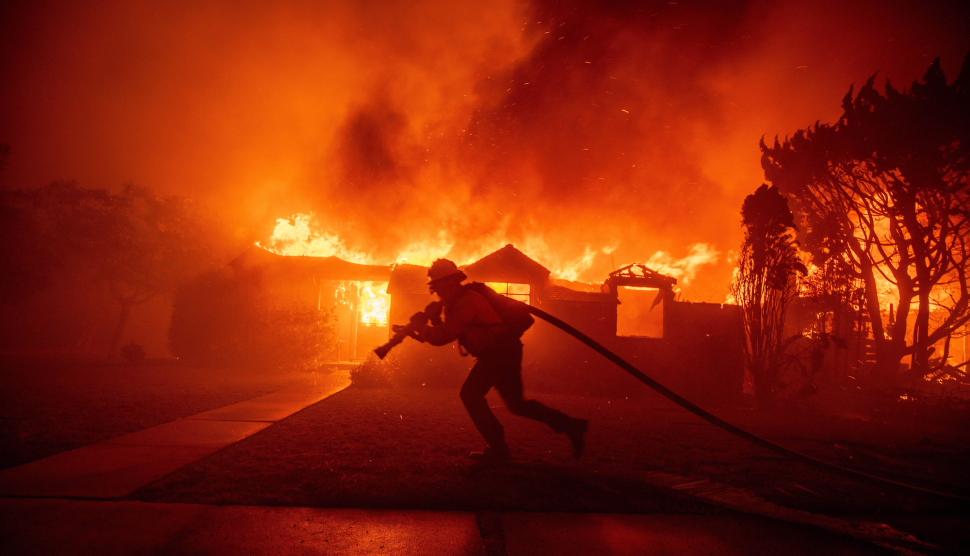When two agents from the federal communications Commission knocked on Scott Willoughby’s door last November, the pirate-radio disc jockey wasn’t exactly surprised to see badges flashed in his face.
More than a year before, the FCC had stepped up its campaign to shut down hundreds of unlicensed stations like Willoughby’s “Radio Free Minturn,” a quirky, “genre-free” station he’d started in that rural Colorado town. Willoughby had read about the wave of FCC busts on the same “Free Radio” Internet sites he and his cohorts had scoured while cobbling together the homemade broadcast studio and 100-watt FM transmitter plainly visible in his living room.
“The FCC was the enemy,” says Willoughby, who ceased his eclectic broadcasts, a musical mix ranging from Patsy Cline to Spearhead and Vivaldi, only after the agents threatened him with a $100,000 fine and up to a year in jail. “They were enforcing unjust [regulations], favoring big business, and undermining our most basic constitutional right of free speech.”
One of the regulations that Willoughby found unjust had phased out new licenses for low-power stations like his more than 20 years ago. Championed, ironically, by community and public-radio broadcasters trying to build their audiences and establish nationwide networks, the elimination in 1978 of low-power, noncommercial “Class D” licenses favored stations whose powerful 50,000-plus-watt signals could reach thousands of listeners rather than hundreds.
It wasn’t long, however, before a small cadre of radio enthusiasts shut out by the new order took to the airwaves illegally. Dubbed “pirates” for the tendency of a few to hijack frequencies from licensed broadcasters, their numbers remained small until the early 1990s, when activists like Stephen Dunifer, founder of Northern California’s Free Radio Berkeley, loudly attacked the FCC’s attempts to shut his station down by claiming his free-speech rights had been violated.
Dunifer became the Johnny Appleseed of the growing movement, harnessing the Internet to publish manuals on how to start pirate stations and evade the authorities. Helped by falling electronics prices and improved technology, Dunifer began selling simple FM transmitters and complete broadcast kits through the mail for as little as $300. Broadcasters around the country soon swelled the pirates’ ranks, prompting the escalating FCC crackdown that by March 1999 had shut down more than 450 stations.
The deck was further stacked against small broadcasters in 1996 when revamped telecommunications laws gave legitimate station owners the right to control unlimited numbers of radio stations across the country and up to eight in a single market. The nation’s media moguls went on a merger-and-acquisition binge that has since swallowed up hundreds of independently owned stations, bidding up the price of available stations and FM frequencies to unprecedented levels.
In Minturn, Colorado, five of the six commercial stations within listening range soon came under control of a single company, which replaced already-scant local programming with preprogrammed playlists. Disc jockeys and talk-show hosts, instead of reflecting local interests, were being piped in via satellite. “Community voices and ideas have been completely eliminated here,” says Willoughby. “We’re forced to listen to what some phantom programmer in Los Angeles decides.”
Meanwhile, with the few remaining FM frequencies now selling at public auction for $100,000 or more, access to the airwaves has become all but out of reach for independent broadcasters. “The state of radio here was worse than ever, and we were pretty much powerless to do anything about it,” says Willoughby, recalling the financially daunting prospect of building a legal local station. “Our intention was never to be outlaws–but it felt like there was no other way to get our voices heard.”
Little did he know at the time of his visit from the FCC that voices like his were not only being heard but acted upon–by the man who had sanctioned the busts. Shortly after becoming FCC chairman in 1997, William E. Kennard–formerly the agency’s general counsel, and long before that a college-radio man himself–worried aloud that the Telecommunications Act he’d helped pass had impeded minority ownership and undermined the variety of voices, ideas, and opinions heard on the radio. Citing an 11.7-percent drop in the number of radio station owners in the year following passage of the Telecom Act, Kennard observed that the 1996 law had prompted “the most dramatic increase in consolidation in the broadcast industry in our history” while threatening the FCC’s public-interest goals of “promoting competition and promoting diversity.”
Kennard has since called for opening up the airwaves to low-power FM broadcasters, so that everyone from university students and church groups to independent radio producers and civil rights activists could enjoy greater access to listeners. After reviewing a series of petitions filed on behalf of self-proclaimed “microbroadcasters” yearning for a legal on-air voice, Kennard last January introduced a proposal for new low-power FM broadcast licenses that could allow thousands of small broadcasters to operate at power ratings of between 1 to 10 watts, 100 watts, and 1,000 watts, filling in the gaps that now separate bigger stations’ signals on the FM dial. To ensure that the new stations would retain their independence, Kennard’s proposal further suggests limiting the new licenses only to new operators, each of whom could control only a single low-power station in any regional market. FCC commissioners could vote on the proposal as early as this fall.
“We need more access and more voices on the airwaves,” Kennard recently told a college-radio interviewer at the University of Maryland’s WMUC-FM. “That’s why I’m so interested in low-power FM.”
Such statements are music to the ears of microradio supporters like Jeremy Wilker, who co-founded Americans for Radio
Diversity, a nonprofit advocacy group. Wilker saw his favorite Minneapolis radio station gobbled up by ABC/Disney in a merger frenzy that cut the number of station owners in that market by half. “This is an amazing opportunity,” says Wilker, who estimates that the proposal, if passed, could double the number of stations broadcasting in his hometown while increasing station ownership fivefold. “We could have 16 new stations, all of which are badly needed.”
Erstwhile Minneapolis pirate broadcaster Alan Freed likes the proposal too. Busted by Kennard’s agents three years ago, and still fighting for the return of his confiscated equipment, Freed insists that pirate stations like his Beat Radio helped push the FCC to accommodate the microradio movement. Low-power licenses could make pirate radio obsolete, however. “I don’t know that piracy is necessary from here on in,” says Freed.
But in a splintered movement of loudmouthed free-speech lovers, there are plenty of microradio advocates who disagree. Free Radio Berkeley’s Dunifer is one: “We’re better off staying illegal,” he says, claiming that Kennard’s proposal will do little to reduce corporate domination of the airwaves. He notes further that while microbroadcasters in rural and suburban areas may be able to obtain licenses under the proposal, the airwaves in metropolitan areas like Los Angeles and New York are already too crowded to allow more than a handful of new licensees.
Just how many low-power stations could be added in a given market depends on a variety of technical and geographic factors, including station wattage and antenna height. To prevent signal interference, current FCC rules require that station signals be separated by at least three open frequencies. And while the FCC’s low-power proposal could decrease that number to one, even its proponents agree with Dunifer that few low-power licenses will be granted in already-crowded urban markets.
And that’s unacceptable to Dunifer, whose own broadcasts targeted urbanites in the Berkeley-Oakland area. He argues that small broadcasts to inner-city neighborhoods are a cornerstone of the microradio movement. “Unless some of the [radio] spectrum is given back to the public, the proposal is worthless to many people,” he says. “Putting more and more [unlicensed] stations on the air is the only way to get something reasonable out of the FCC. And until that happens, we should resist flawed proposals like this one.”
Dunifer’s rhetoric notwithstanding, Kennard’s proposal faces its toughest opposition from the National Association of Broadcasters, one of the nation’s most powerful lobbying groups, which represents 5,400 FM and AM stations. Worried that new low-power stations will sap away listeners and interfere with existing broadcasts, the NAB has launched an aggressive lobbying effort in opposition to the FCC proposal, and is sponsoring technical studies to prove that low-power stations would degrade the ability of existing stations to broadcast clear signals.
At the same time, the NAB argues that industry consolidation has neither homogenized programming nor reduced minority ownership. “When a company buys multiple stations in a market, they don’t want them to compete against each other,” says NAB spokesman John Earnhardt. “So they make sure each has a different format.” Earnhardt also points to a recent National Telecommunications and Information Administration study showing an increase in minority ownership since passage of the Telecommunications Act. “There’s simply no proof that consolidation has undermined program diversity or hurt minorities,” he says.
Microradio advocates point out, however, that the increase (from 100 minority-owned FM stations to 116) is a modest one that still leaves minority owners with a scant 2.1 percent of the FM radio market. “Those tiny numbers are evidence enough that we lack diversity of ownership,” says Cheryl A. Leanza, deputy director of the Media Access Project, a nonprofit telecom law firm. And with radio station prices skyrocketing, “people with less access to capital can’t get into the game.”
Leanza and others also argue that diverse formats don’t equal diverse opinions. “What’s needed are independently owned outlets, not a variety of content controlled by one owner,” says FCC commissioner Susan Ness, who cites a 1945 U.S. Supreme Court ruling that the First Amendment requires “the widest possible dissemination of information from diverse and antagonistic sources.” Says Ness: “ÔAntagonistic’ sources can only be truly antagonistic if they are separately owned.”
Of course, independent ownership is no guarantee of either greater programming diversity or increased minority ownership. “The [proposal’s] effect will be minor,” predicts communications lawyer and former FCC staffer Michael Couzens, who notes that a 1990 Supreme Court ruling bars the FCC from actively promoting minority ownership. “It will result in more stations, but there’s no constitutional way to favor minority applicants.” Couzens also points to a provision in the 1997 federal budget mandating that new licenses must be awarded at auction. “The FCC is checkmated. To the extent that the proposal is meant to address the problem of underrepresentation of minority ownership, it won’t do that.”
Nonetheless, the FCC’s seemingly strong support for legalizing microradio–four of its five commissioners voted in January to consider the low-power FM proposal–has inspired former pirates like Minneapolis’ Freed and Minturn’s Willoughby to power down their illicit transmitters in hopes of one day going legal. “When the feds busted us, we figured that was the end of Radio Free Minturn,” says Willoughby, who is now gathering petitions supporting the FCC proposal and raising money to fund his station’s rebirth. “But apparently somebody is still listening to us after all.”

















